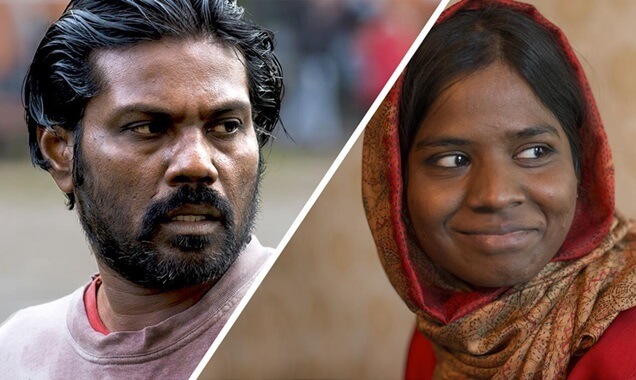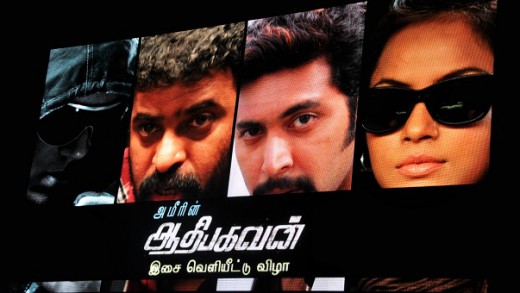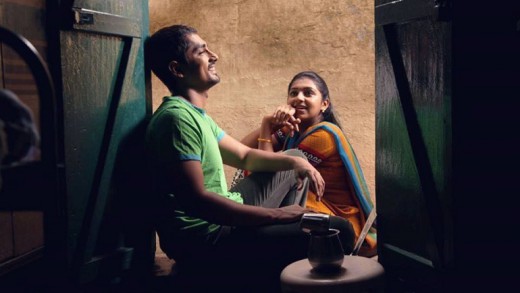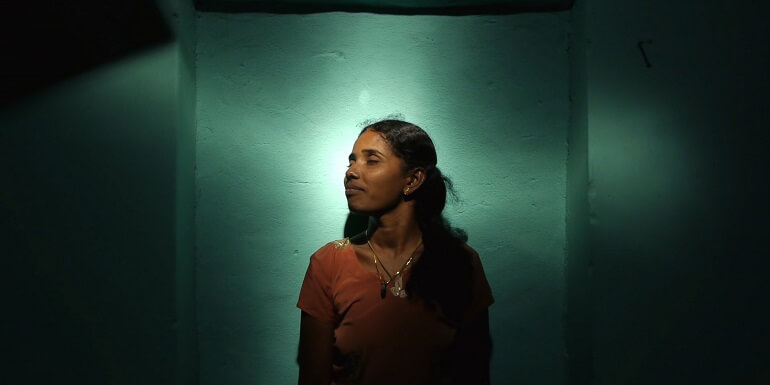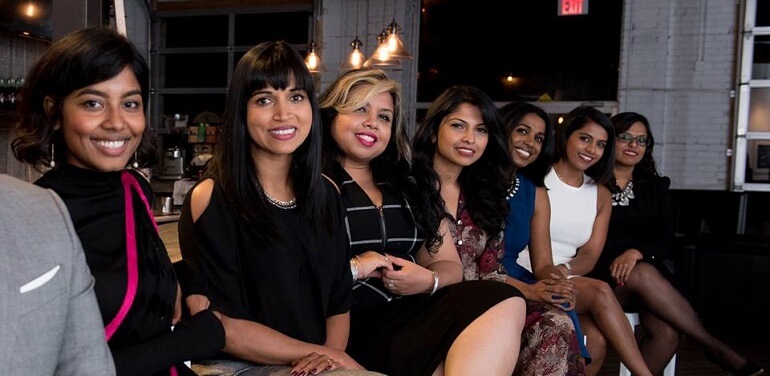In Dheepan, no family photos are taken in front of the Eiffel Tower with over-sized sunglasses and over-saturated film stock, like the ones against the black fences of Niagara Falls in neon jackets and shoulder pads, nor in the middle of a shopping mall (I never understood that fascination).
No, save for two photos, one of a row of Tamil Tigers posing together and the other, buried deep in a wallet and then hidden behind tiny gold doors, photos would make the relationships and ties of this faux-family permanent, tangible—the only authentic dramatic tension derives from that looseness that comes with a family formed of strangers, like a group of friends or co-workers. Photos, or a camera, would give the Others an opportunity and agency to shape their perspective and views on how they see the world and envision a future, but Audiard is only interested in how he sees them, so photos only become a symbol of the past.
Perspective shots only appear in the film in times of estrangement and confusion: the close-up of lips speaking a foreign language, a zoom-in of a classroom of settled faces, French girls walking down the road laughing with each other, and the slow zoom of a fragmented computer screen showing quick, compiled videos of tragedy in Sri Lanka on an English newscast.
If Audiard aims to tell the story of Sri Lankans, these indirect and rare perspective shots only seek to reinforce the image of the Other and estrange the characters further into their oppression and trauma—Audiard does not tell the story of these people but he tells his story of these people.
When Yalini begins to be the maidservant for an elderly man, she falls into a friendship with his gangster son, Brahim, a white, blue-eyed, bad boy with a temper who gives her equal amounts of attention and fear. Brahim invites Yalini to watch football on TV with him, and sitting on the edge of the couch they both, Other and male gaze, see the same thing—a game being played.
Brahim watches the game with intensity but Yalini’s gaze quickly shifts, it must, to his body and the ankle monitor he wears, she begins to question him on what it is and why he has it—what game are you playing? The Other pries and sticks its nose where it shouldn’t, it is curious and eager, but it’s focus will always be on the image of power that it cannot have.
In one of Yalini and Brahim’s kitchen conversations:
BRAHIM: Are you happy here with your husband?
YALINI: Uh.
BRAHIM: You, are you happy here?
YALINI (nods): Yes.
BRAHIM: And where are you from? India, Paki?
YALINI: Um, Sri Lanka.
BRAHIM: Where’s that?
YALINI: Um. India is here (She takes the plate she is washing and points at the top of the plate); Sri Lanka is here (She points to the bottom of the plate, but it’s not visible).
BRAHIM: It’s a bit far from India then.
YALINI: No, it’s under India.
BRAHIM (holding up his cigarette): You want?
YALINI (nodding and smiling): No.
A scene a few days later:
YALINI (in Tamil): That’s not my daughter. That’s not my husband. It’s all a lie.
BRAHIM (in French): And what do you mean when you (He starts rolling his head and smiling). Does that mean yes or no?
YALINI: In our country, if we fall we laugh. If we’re hiding something we laugh. Here, if you laugh too much, people think that you don’t understand what they are saying. Or they think that you are mocking them. Now I have to be careful. To what extent do I have to control myself? Head shaking, too. How are you? (She nods, smiling). It’s nice outside. (She nods, smiling).
Brahim joins in on the head shaking, smiling.
These conversations hold an argument within them: when Yalini speaks Tamil to Brahim or his father, when the doorman speaks French to Dheepan, when Brahim speaks French to Dheepan or Yalini—there is a failure to communicate what each other is trying to say. The mother tongue that becomes a secret of its own causes tension but also distances the characters, white and brown, from each other.
If anything, the friendship that forms between Brahim and Yalini proves that verbal communication is not a necessity, just difference and exploitation. Yalini, with that mysterious tattoo on the back of her neck, serves Brahim’s father’s failing body and makes her living as his maidservant forever stuck to the interiors to make her living. Even with her able body, her brown skin puts at her at a disadvantage to the disabled one—class and race will always supersede in this world.
In bell hooks’ essay “Eating the Other: Desire and Resistance,” she examines the way that Otherness is represented in culture and the Other is confronted in society, and she provides insight into the encounters between Yalini and Brahim: “To make one’s self vulnerable to the seduction of difference, to seek an encounter with the Other, does not require that one relinquish forever one’s mainstream positionality. When race and ethnicity become commodified as resources for pleasure, the culture of specific groups, as well as the bodies of individuals, can be seen as constituting an alternative playground where members of dominating races, genders, sexual practices affirm their power-over in intimate relations with the Other.”
For both Brahim and Audiard, the interaction with the Tamils provides a chance for them to not only tell a story using them but by way of their interaction with them. Brahim quickly dismisses the exact whereabouts of where Yalini is from, or what circumstances that have lead her to his kitchen, and instead is more interested in the reasons why she shakes her head—it’s more exploitation than an interest or to provide context.
Jacques Audiard, who explored the barriers of language in Read My Lips and The Beat that Skipped My Heart, the criminal underworld in the latter film and A Prophet, and the relationship between a man and a woman who form a family with the man’s son he doesn’t want to take care of in Rust and Bone culminates in Dheepan—the only difference being the Others that occupy these scenes. These interactions between Yalini and Brahim only seek to reinforce the power and domination of Brahim and Audiard and the brown, discolored, headscarf laden Yalini and her Otherness.
To Be Continued…

 Nirris Nah
Nirris Nah